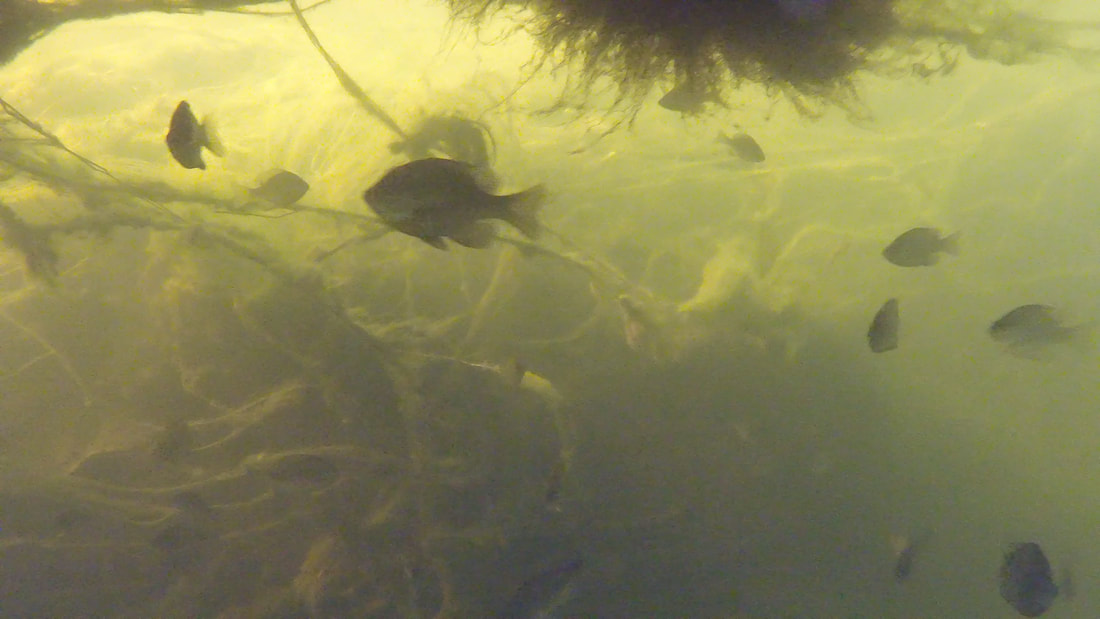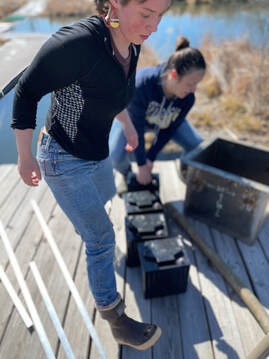A functional wetland, up watershed from a lake, can spell the difference between a healthy lake that’s resistant to Harmful Algae Blooms, and a lake that is both vulnerable to HABs and on its way out.
For several dozen years, a new lake management tool has evolved. Lake managers can restore natural wetland function using constructed wetlands. Various forms of man-made wetlands fill in the gap caused by destructive development trends. When combined with fishery enhancement and strategic fish harvest, constructed wetlands like floating treatment wetlands can actually reverse a lake’s trophic index. Floating wetlands support fish growth; as they grow, the fish pull nutrients out of the water, and - as long as they are ultimately harvested - the lake is transitioned back to health. Lake managers can now “grow fish instead of algae.” Algae prevention instead of chemical treatment. In fact, nutrient-rich water that is poised to experience suffocating HABs is a prime candidate for treatment by floating treatment wetlands, which actually are positioned on the target waterway. They can certainly be located up watershed as well, where they will favorably influence inflow water quality. But floating treatment wetlands, like the BioHaven, can be positioned directly on a target lake, where they compete for nutrients with blue-green algae and potentially deadly cyanobacteria, and contribute to fishery improvement in the process. Strategically positioned islands can also provide wave mitigation and corresponding shoreline protection. The BioHaven system has been proven internationally, and has withstood numerous hurricane events, with over 9,000 islands in place in both, fresh and marine water settings, from Alaska to Florida. Today the BioHaven brand is advancing into Water Resource Recovery (WRR), where island systems generate commercial volumes of solar energy which pay for large projects. Such projects mean that even large water is treatable. WRR systems can actually be aesthetic additions to water while enhancing a fishery. And they can remove what is otherwise a public tax burden, as they mitigate and prevent disastrous algae blooms.
The wetlands that have been historically taken out by real estate developers, that have been viewed as problems instead of vital, natural systems that warrant preservation, must always be preserved and recovered wherever possible. But today constructed wetlands represent a versatile new ability to add nature’s wetland effect across the vast range of lake systems in North America. Floating Island International is also bringing their BioHaven system to Europe and Asia, targeting water that represents vast greenhouse gas emissions.
Water quality is directly connected with climate health, and fixing water is a vital form of climate action. The next step, motivating lake managers by providing carbon credit for methane mitigation, one more tool with which to incentivize effective lake management. Lake health and climate health go hand in hand. Water health and quality of life go hand in hand as well. Clear water that is also productive, is both possible and smart.
0 Comments
Leave a Reply. |
AuthorWrite something about yourself. No need to be fancy, just an overview. Archives
August 2023
Categories
All
|


 RSS Feed
RSS Feed